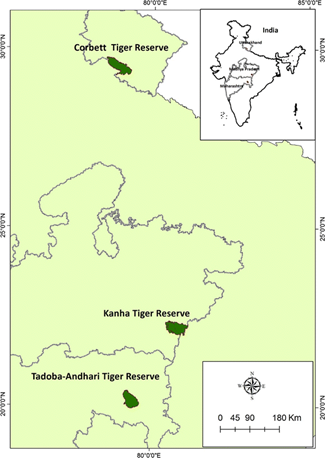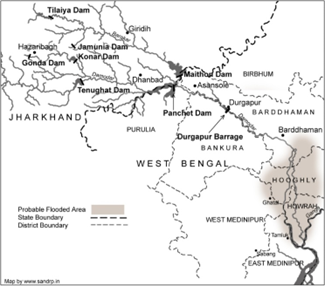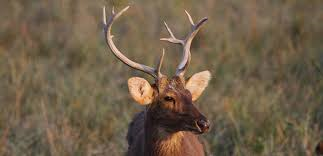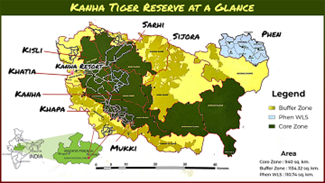Economy
Stablecoins:
-
- Stablecoins are a type of cryptocurrency that attempt to maintain stable prices as they are pegged to an underlying asset, such as a basket of currencies or precious metals.

-
- The RBI has lobbied hard to ban virtual digital assets outright, while simultaneously launching pilot projects of its own Central Bank Digital Currency (CBDC).
- CBDC is a digital form of the country’s physical currency and functions as legal tender, offering the same features as cash, such as safety, trust, and settlement finality.
(TH)
Science & Technology
Diethylene glycol (DEG) and ethylene glycol (EG):
-
- Both are colourless, odourless, hygroscopic, and miscible in water and alcohol, contributing to their industrial utility.
- Both compounds are highly toxic if ingested, primarily affecting the kidneys, central nervous system, and cardiovascular system.
- EG is metabolized to oxalic acid, which binds calcium and causes acute kidney failure and metabolic acidosis.
- DEG is metabolized to 2-hydroxyethoxyacetic acid (HEAA), leading to severe renal and hepatic damage, with delayed neurological symptoms including
- EG is primarily used in antifreeze, coolants, de-icing fluids, and as a raw material for producing polyethylene terephthalate (PET) plastics and polyester fibers.
- DEG serves as a solvent in resins, dyes, and inks; a humectant in cosmetics and tobacco; a plasticizer; and a desiccant in natural gas pipelines to prevent hydrate formation.
- The World Health Organization (WHO) has issued global alerts on DEG and EG contamination in syrups and medicines, leading to child fatalities.
- Gas Chromatography is a suitable and widely used analytical technique to test pharmaceutical products for DEG and EG.
(TH)
Geography & Environment
Tadoba Andhari Tiger Reserve:
-
- It is Maharashtra’s oldest and largest national park, situated in Chandrapur district.
- It covers approximately 1,727 sq.km, comprising core and buffer zones.
- The landscape features tropical dry deciduous forests, rocky cliffs, rolling meadows, and several key water bodies such as Tadoba Lake, Kolsa Lake, and the Andhari River, which support its wildlife.
- Established as Tadoba National Park in 1955; Andhari Wildlife Sanctuary was added in 1986 and merged in 1995 to form the present reserve.
- The name “Tadoba” comes from the deity “Taru” worshipped by local tribal communities, while “Andhari” is derived from the river flowing through the area.
- Flora: The major tree species are: Teak, Ain, Bamboo, Bija, Dhaoda, Haldu, Salai, Semal and Tendu. Along the moist areas, species like Mango, Jamun and Arjun are found. Bamboo (Dendrocalamus strictus) is spread over 40% of the habitat. There are 667 species of flowering plants.
- Fauna: The notable faunal species include: tiger, leopard, sloth bear, wild dog, gaur, chital and sambar. As many as, 280 species of birds are found, apart from reptiles (54 species), amphibians (11 species) and fishes (84 species).

(TH)
Damodar Valley Corporation (DVC):
-
- The DVC was established in 1948 and is a multipurpose river valley project under the Union Ministry of Power that manages a network of dams in the Damodar River valley area spread across Jharkhand and West Bengal.
- DVC was set up with a mandate for flood control, irrigation, generation and transmission of electricity, and year-round navigation within the Damodar Valley region.
- DVC constructed four major dams: Tilaiya (1953), Konar (1955), Maithon (1957; India’s first underground hydel station), and Panchet (1959), providing flood control, water storage, and hydropower.
- Durgapur Barrage (1955) enables canal-based irrigation across large parts of West Bengal.
- DVC generates power using coal, water, and liquid fuel, contributing substantially to the energy needs of eastern India.
- The concept was advanced by noted scientists like Meghnad Saha; the Damodar Flood Enquiry Committee and technical experts from TVA guided its planning
- The organization is jointly managed by the central government and the states of West Bengal and Jharkhand.

(TH)
Kanha tiger reserve:
-
- It is in the “Maikal” ranges of the Satpuras and falling in the Mandla and Balaghat districts of Madhya Pradesh.
- Originally declared a reserve forest in 1879, then a wildlife sanctuary in 1933, Kanha was designated a national park in 1955 and included under Project Tiger in 1973.
- It was one of the first nine tiger reserves launched under Project Tiger, making it one of India’s earliest and most important protected areas for tigers.
- The State animal of Madhya Pradesh – Hard Ground Barasingha is found exclusively here.

-
- Flora & Fauna:
- Kanha best known for its evergreen Sal forests, is home to about 300 species of Birds, 43 species of Mammals, 26 species of Reptiles and more than 500 species of Insects.
- The Major species found are hard ground Barasingha, Tiger, Leopard, Dhole, Bear, Gaur and Indian Python etc.
- Flora & Fauna:

(TH)
Captions and Quotations
Polity:
-
- “It is important to remember that just because something is legalised, it does not mean it is just. History offers numerous examples of this painful truth. Slavery was once legal in many parts of the world, including the U.S. In India, colonial legislation such as the Criminal Tribes Act of 1871 branded entire communities criminals by birth. Laws of sedition were often used to suppress resistance against oppressive legal systems,” Chief Justice of India Gavai observed in his inaugural Sir Maurice Rault Memorial Lecture 2025.
(TH)
PRACTICE MCQ’S
Q1. Consider the following statements about Stablecoins:
1. They are a type of cryptocurrency.
2. They have a fixed exchange rate.
3. These stablecoins rely on smart contracts and an algorithm to maintain their fix rate.
Which of the statements given above are correct?
a) 1 and 2 only
b) 2 and 3 only
c) 1 and 3 only
d) 1, 2 and 3
Answer: D
Explanation:
Statement 1 is correct: Stablecoins are a type of cryptocurrency that attempt to maintain stable prices as they are pegged to an underlying asset, such as a basket of currencies or precious metals.
Statement 2 is correct: Stablecoins are designed to maintain a fixed exchange rate with a stable asset, such as a fiat currency like the U.S. dollar, or a commodity like gold.
Statement 3 is correct:
These stablecoins rely on smart contracts and an algorithm to maintain their peg.
- If the stablecoin trades above its peg: The algorithm automatically mints (creates) more stablecoins to increase the supply and bring the price back down.
- If the stablecoin trades below its peg: The algorithm automatically burns (destroys) tokens to reduce the supply, increasing the price and returning it to the target value.
Q2. Which of the following statements best explains why diethylene glycol (DEG) and ethylene glycol (EG) pose a significant public health risk when present in pharmaceutical syrups?
a) They are volatile organic compounds that cause respiratory distress when inhaled.
b) They are metabolized into toxic acids that lead to acute kidney failure and neurological damage.
c) They act as immunosuppressants, increasing susceptibility to infections.
d) They promote microbial growth in liquid formulations, leading to sepsis.
Answer: B
Explanation: Ethylene glycol is metabolized to oxalic acid, which binds calcium and causes renal failure and metabolic acidosis, while diethylene glycol is metabolized to 2-hydroxyethoxyacetic acid (HEAA), resulting in severe hepatic and renal damage with delayed neurological effects such as coma. Their presence in syrups, especially those administered to children, has led to multiple fatalities, prompting WHO alerts.
Q3. Consider the following statements about Tadoba Andhari Tiger Reserve:
1. It was formed by merging Tadoba National Park and Andhari Wildlife Sanctuary in 1986.
2. The reserve derives its name from the local deity “Taru” and the Andhari River that flows through it.
3. Bamboo covers around 40% of the reserve, and it supports over 280 bird species.
Which of the statements given above are correct?
a) 1 and 2 only
b) 2 and 3 only
c) 1 and 3 only
d) 1, 2 and 3
Answer: B
Explanation:
Statement 1 is incorrect: Tadoba National Park was established in 1955, and Andhari Wildlife Scanctuary was added later in 1986. The two were merged in 1995 to form the present tiger reserve.
Statement 2 is correct: “Tadoba is derived from “Taru”, a local tribal deity, and “Andhari” comes from the Andhari River.
Statement 3 is correct: Bamboo covers approximately 40% of the habitat, and the reserve is home to about 280 species of birds, along with rich floral and fauna.
Q4. Consider the following statements with reference to the Damodar Valley Corporation (DVC):
1. DVC manages a network of dams and power stations primarily for flood control, irrigation, power generation, and navigation in the Damodar River valley of Jharkhand and West Bengal.
2. The Maithon Dam, constructed by DVC, houses India’s first underground hydel power station.
3. DVC is managed solely by the Union Ministry of Power without any participation from the states.
Which of the statements given above are correct?
a) 1 and 2 only
b) 2 and 3 only
c) 1 and 3 only
d) 1, 2 and 3
Answer: A
Explanation:
Statements 1 and 2 are correct: DVC is a multipurpose project managing major dams for flood control, irrigation, hydropower, and navigation in the Damodar valley, and the Maithon dam is notable for housing the country’s first underground hydel power station.
Statement 3 is incorrect: DVC is a joint initiative managed by the central government and the governments of West Bengal and Jharkhand, not solely by the Union Ministry of Power.
Q5. Consider the following statements with reference to Kanha tiger reserve:
1. Kanha was the ancestral home of both the Gond and Baiga tribes.
2. The hard ground barasingha, the state animal of Madhya Pradesh, is endemic to this park and is not found anywhere else in the wild.
Which of the statements given above is/are correct?
a) 1 only
b) 2 only
c) Both 1 and 2
d) Neither 1 nor 2
Answer: C
Explanation:
Statement 1 is correct: The primary tribes historically associated with Kanha National Park are the Gonds and the Baigas. While these tribes once lived in villages within what is now the park, many were relocated in the late 1960s to protect the forest and its wildlife. Today, both tribes continue to live in the surrounding areas of the park.
Statement 2 is correct: The hard ground barasingha (Rucervus duvaucelii branderi) is the state animal of Madhya Pradesh and is found exclusively in Kanha, making it a keystone species of the park and a major conservation.
Spread the Word
